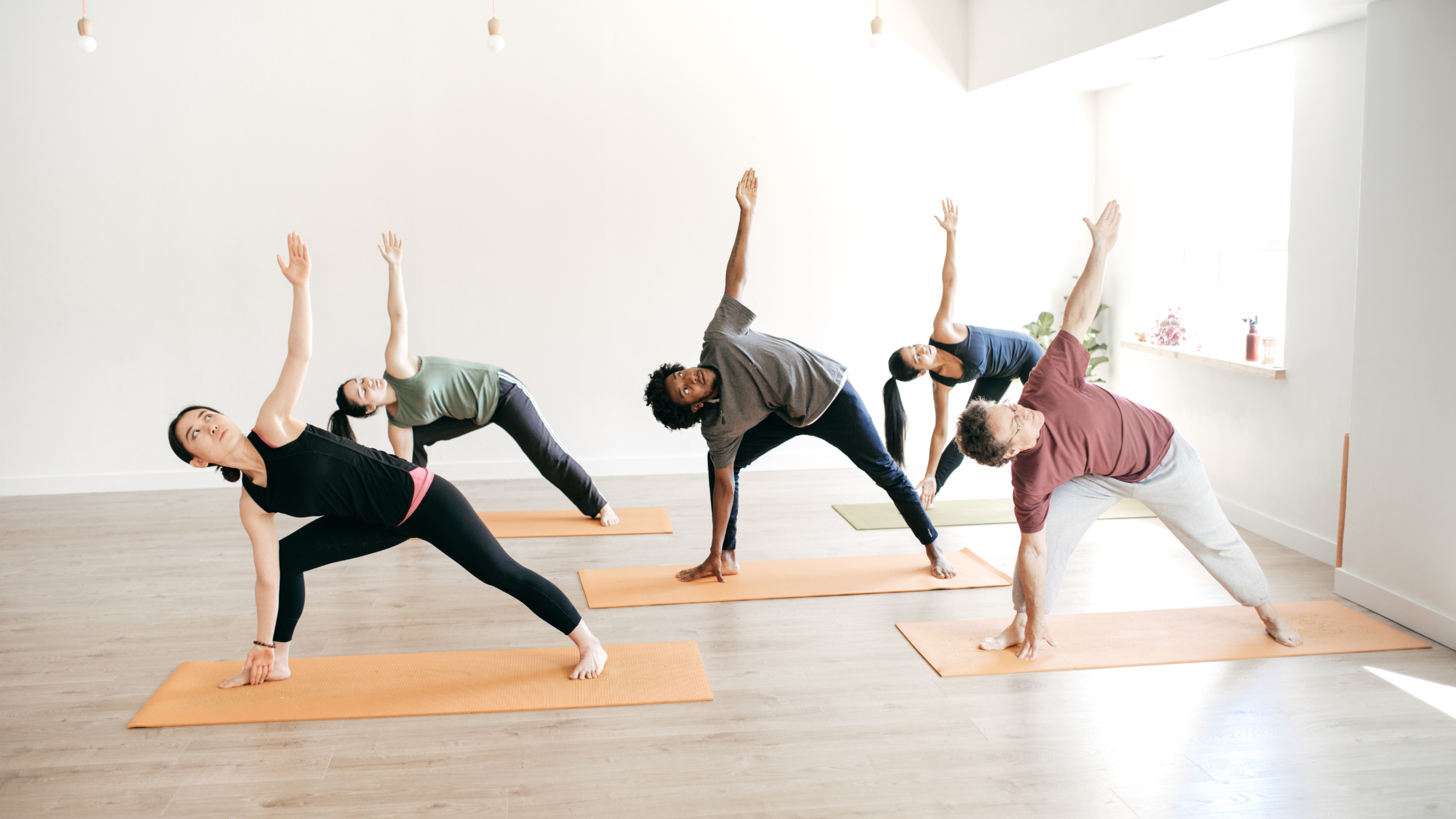
Natasha Turner
My loyal readers and patients know my number one workout passion is lifting weights. However, years of weightlifting and running, especially without proper stretching, can shorten tendons and cause stiffness, misalignment, and joint and back pain. With its full spectrum of poses, yoga can bring the body back into its natural alignment, level out imbalances, and strengthen physical weaknesses. If you’re an athlete, yoga can improve your performance by increasing your flexibility, relaxation, breathing, and balance, though anyone can improve their posture, energy, and endurance with regular yoga practice.
From Oxidative Medicine and Cellular Longevity (January 2017), researchers found that 12 weeks of yoga slowed cellular aging as well as lowering inflammation and insulin and significantly decreasing cortisol. The study also found higher levels of BDNF (a neuroprotective compound) after the yoga program, suggesting that yoga could have potential protective effects for the brain as well. And from Frontiers in Human Neuroscience (June 2017), researchers found that a three-month yoga retreat, incorporating physical postures, controlled breathing practices, and seated meditations, reduced inflammation and stress in the body. Levels of protective anti-inflammatory markers increased after the retreat, while harmful pro-inflammatory markers decreased. Researchers also found that BDNF levels tripled. Participants felt less depressed and less anxious and had fewer physical symptoms.
These studies suggest that yoga could slow down the harmful effects of chronic stress at both the psychological and physical levels. They also indicate the benefits of a yoga practice that incorporates more than just poses by including yoga breathing and meditation or deep relaxation. In addition, research from the Boston University School of Medicine and McLean Hospital, published in the Journal of Alternative and Complementary Medicine (May 2007), suggests yoga should be explored as a possible treatment for disorders often associated with low GABA levels such as depression and anxiety.
According to the International Journal of Yoga (May–Aug 2018), yoga improves antioxidant status in men (though I am sure the same findings would be true for women, too). Yoga training was given for 60 minutes a day, six days a week for 12 weeks in the test group, while a control group did no yoga training. Body composition and oxidant–antioxidant status were assessed in both groups before and after the 12-week period. The results were promising! They showed a substantial reduction in the percentage of body fat and malondialdehyde (a free-radical stressor) and a significant elevation in the antioxidants superoxide dismutase, catalase, glutathione, and ascorbic acid. There was no major difference in weight or lean body mass among the yoga group after 12 weeks when compared to baseline data, but this may simply show that men need more than yoga to increase muscle mass.
The impact on lean muscle mass, however, is different in post-menopausal women. According to the Journal of Aging and Physical Activity (January 2018), where researchers looked at whole-body protein utilization, protein synthesis, and protein breakdown, which provide insight into muscle mass. These factors were compared between women who routinely practiced yoga and those who did not. They found that lean body mass was higher in the women who routinely practiced yoga, suggesting that, over the long term, yoga can be an alternative mode of exercise for maintaining muscle mass in support of active aging.
Bonus Tip?
Interval training, or sprinting, is the bomb when it comes to burning fat and preserving muscle. So many studies over the years support this type of training as the best choice when it comes to dropping fat fast. For example, the British Journal of Sports Medicine (May 2019) compared interval training with continuous steady-state exercise. The results were astounding: while both kinds of training reduced body fat percentage, interval training resulted in a 28.5 percent greater reduction in total fat mass.
Short bursts of exercise not only improve your cardiovascular fitness but your fat-burning capacity as well, even during low- or moderate-intensity workouts. What’s more, high-intensity training provides a boost of our feel-good and appetite-controlling hormones and preserves muscle. But do not rush into interval training if you have heart disease, high blood pressure, or joint problems, or if you are over the age of 60. If you fit into any one of these categories, you should consult your doctor first.
If you are not familiar with the concept of interval training, here’s one approach to choose from:
Steady-pace Intervals of Walking, Jogging, Running, Cycling